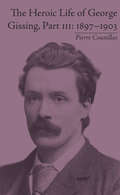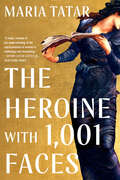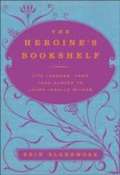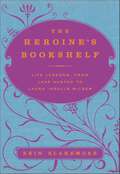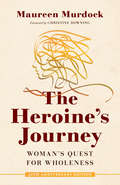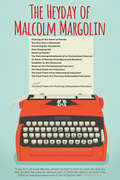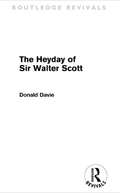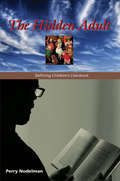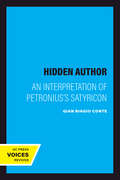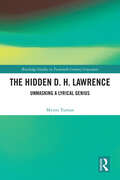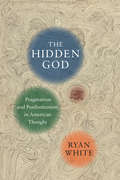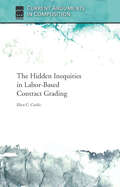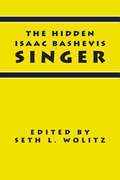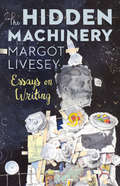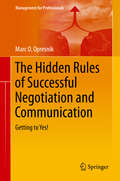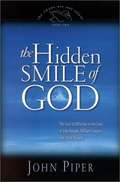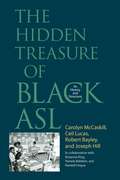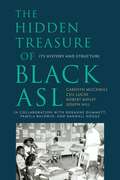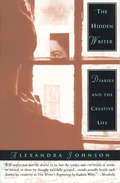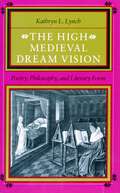- Table View
- List View
The Heroic Life of George Gissing, Part III: 1897–1903 (The Heroic Life of George Gissing)
by Pierre CoustillasThis ambitious three-volume biography on Gissing examines both his life and writing both chronologically and in close detail. This final volume in Coustillas’s prodigious biography examines the turbulent last years of the author’s life and his literary afterlife.
The Heroic Temper: Studies in Sophoclean Tragedy (Sather Classical Lectures #35)
by Bernard M. KnoxThe first two chapters of this book isolate and describe the literary phenomenon of the Sophoclean tragic hero. In all but one of the extant Sophoclean dramas, a heroic figure who is compounded of the same literary elements faced a situation which is essentially the same. The demonstration of this recurrent pattern is made not through character-analysis, but through a close examination of the language employed by both the hero and those with whom he contends. The two chapters attempt to present what might, with a slight exaggeration, be called the "formula" of Sophoclean tragedy.A great artist may repeat a structural pattern but he never really repeats himself. In the remaining four chapters, a close analysis of three plays, the Antigone, Philoctetes, and Oedipus at Colonus, emphasizes the individuality and variety of the living figures Sophocles created on the same basic armature. This approach to Sophoclean drama is (as in the author's previous work on the subject) both historical and critical; the universal and therefore contemporary appeal of the plays is to be found not by slighting or dismissing their historical context, but by an attempt to understand it all in its complexity. "The play needs to be seen as what it was, to be understood as what it is."
The Heroine with 1001 Faces
by Maria TatarWorld-renowned folklorist Maria Tatar reveals an astonishing but long-buried history of heroines, taking us from Cassandra and Scheherazade to Nancy Drew and Wonder Woman. The Heroine with 1,001 Faces dismantles the cult of warrior heroes, revealing a secret history of heroinism at the very heart of our collective cultural imagination. Maria Tatar, a leading authority on fairy tales and folklore, explores how heroines, rarely wielding a sword and often deprived of a pen, have flown beneath the radar even as they have been bent on redemptive missions. Deploying the domestic crafts and using words as weapons, they have found ways to survive assaults and rescue others from harm, all while repairing the fraying edges in the fabric of their social worlds. Like the tongueless Philomela, who spins the tale of her rape into a tapestry, or Arachne, who portrays the misdeeds of the gods, they have discovered instruments for securing fairness in the storytelling circles where so-called women’s work—spinning, mending, and weaving—is carried out. Tatar challenges the canonical models of heroism in Joseph Campbell’s The Hero with a Thousand Faces, with their male-centric emphases on achieving glory and immortality. Finding the women missing from his account and defining their own heroic trajectories is no easy task, for Campbell created the playbook for Hollywood directors. Audiences around the world have willingly surrendered to the lure of quest narratives and charismatic heroes. Whether in the form of Frodo, Luke Skywalker, or Harry Potter, Campbell’s archetypical hero has dominated more than the box office. In a broad-ranging volume that moves with ease from the local to the global, Tatar demonstrates how our new heroines wear their curiosity as a badge of honor rather than a mark of shame, and how their “mischief making” evidences compassion and concern. From Bluebeard’s wife to Nancy Drew, and from Jane Eyre to Janie Crawford, women have long crafted stories to broadcast offenses in the pursuit of social justice. Girls, too, have now precociously stepped up to the plate, with Hermione Granger, Katniss Everdeen, and Starr Carter as trickster figures enacting their own forms of extrajudicial justice. Their quests may not take the traditional form of a “hero’s journey,” but they reveal the value of courage, defiance, and, above all, care. “By turns dazzling and chilling” (Ruth Franklin), The Heroine with 1,001 Faces creates a luminous arc that takes us from ancient times to the present day. It casts an unusually wide net, expanding the canon and thinking capaciously in global terms, breaking down the boundaries of genre, and displaying a sovereign command of cultural context. This, then, is a historic volume that informs our present and its newfound investment in empathy and social justice like no other work of recent cultural history.
The Heroine's Bookshelf: Life Lessons, from Jane Austen to Laura Ingalls Wilder
by Erin BlakemoreIn this compelling book of beloved heroines and the remarkable writers who created them, Blakemore explores how the pluck and dignity of literary characters such as Scout Finch and Jo March can inspire women today.
The Heroine's Bookshelf: Life Lessons, from Jane Austen to Laura Ingalls Wilder
by Erin BlakemoreA testament to inspirational women throughout literature, Erin Blakemore’s exploration of classic heroines and their equally admirable authors shows today’s women how to best tap into their inner strengths and live life with intelligence, grace, vitality and aplomb. This collection of unforgettable characters—including Anne Shirley, Jo March, Scarlett O’Hara, and Jane Eyre—and outstanding authors—like Jane Austen, Harper Lee, and Laura Ingalls Wilder—is an impassioned look at literature’s most compelling heroines, both on the page and off. Readers who found inspiration in books by Toni Morrison, Maud Hart Lovelace, Ursula K. LeGuin, and Alice Walker, or who were moved by literary-themed memoirs like Shelf Discovery and Everything I Needed to Know About Being a Girl I Learned from Judy Blume, get ready to return to the well of women’s classic literature with The Heroine's Bookshelf.
The Heroine's Journey: Woman's Quest for Wholeness
by Maureen MurdockThis book describes contemporary woman's search for wholeness in a society in which she has been defined according to masculine values. Drawing upon cultural myths and fairy tales, ancient symbols and goddesses, and the dreams of contemporary women, Murdock illustrates the need for—and the reality of—feminine values in Western culture today.
The Hesiodic Catalogue of Women and Archaic Greece
by Kirk OrmandThis book examines the extant fragments of the archaic Greek poem known in antiquity as Hesiod's Catalogue of Women. Kirk Ormand shows that the poem should be read intertextually with other hexameter poetry from the eighth to sixth century BCE, especially Homer, Hesiod, and the Cyclic epics. Through literary interaction with these poems, the Catalogue reflects political and social tensions in the archaic period regarding the production of elite status. In particular, Ormand argues that the Catalogue reacts against the "middling ideology" that came to the fore during the archaic period in Greece, championing traditional aristocratic modes of status. Ormand maintains that the poem's presentation of the end of the heroic age is a reflection of a declining emphasis on nobility of birth in the structures of authority in the emerging sixth century polis.
The Heyday of Malcolm Margolin: The Damn Good Times of a Fiercely Independent Publisher
by Kim BancroftIn an age of big box stores and media conglomerates, how can an independent publishing house survive—and even thrive? Kim Bancroft takes us into Heyday, a small press that for forty years has spotlighted California's best stories. Drawing from the words of founder Malcolm Margolin, this compelling portrait recounts the making of Heyday, from its roots in the do-it-yourself/change-the-world clime of 1970s Berkeley to its present-day status as the “cultural linchpin for the state” (Northern California Book Booksellers Association). A chorus of friends, including Maxine Hong Kingston, Robert Hass, and Kevin Starr, enriches our understanding of a vibrant literary community and its one-of-a-kind leader. Funny and provocative, The Heyday of Malcolm Margolin reveals the workings of a courageously unconventional enterprise run on beauty, passion, friendship, and joy.
The Heyday of Sir Walter Scott (Routledge Revivals)
by Donald DavieFirst published in 1961, this book examines a number of works popular in the Romantic period, during the heyday of Sir Walter Scott in the early part of the nineteenth century. Encompassing works by the likes of Alexander Pushkin, Sir Walter Scott, Adam Mickiewicz and James Fenimore Cooper, this is also a meditation on the nature of Romanticism and its enduring value, as expressed in the novel form. Donald Davie also considers the meaning and importance of ‘plot’ and of ‘realism’.
The Hidden Adult: Defining Children's Literature
by Perry NodelmanWhat exactly is a children’s book? How is children’s literature defined as a genre? A leading scholar presents close readings of six classic stories to answer these questions and offer a clear definition of children’s writing as a distinct literary form. Perry Nodelman begins by considering the plots, themes, and structures of six works: "The Purple Jar," Alice in Wonderland, Dr. Doolittle, Henry Huggins, The Snowy Day, and Plain City—all written for young people of varying ages in different times and places—to identify shared characteristics. He points out markers in each work that allow the adult reader to understand it as a children’s story, shedding light on ingrained adult assumptions and revealing the ways in which adult knowledge and experience remain hidden in apparently simple and innocent texts.Nodelman then engages a wide range of views of children's literature from authors, literary critics, cultural theorists, and specialists in education and information sciences. Through this informed dialogue, Nodelman develops a comprehensive theory of children's literature, exploring its commonalities and shared themes. The Hidden Adult is a focused and sophisticated analysis of children’s literature and a major contribution to the theory and criticism of the genre.
The Hidden Author: An Interpretation of Petronius's Satyricon (Sather Classical Lectures #60)
by Gian Biagio ConteThe Satyricon of Petronius, a comic novel written in the first century A.D., is famous today primarily for its amazing banquet tale, "Trimalchio's Feast." But this episode is only one part of the larger picture of life during Nero's rule presented in the work. In this accessible discussion of Petronius's masterful use of parody, Gian Biagio Conte offers an interpretation of the Satyricon as a whole. He combines the scholarly precision of close reading with a significant, original theoretical model.At the heart of his interpretation, Conte reveals the technique of the "hidden author" that Petronius employs at the expense of his characters, in particular the teller of the story, Enclopius. By remaining hidden outside the narrative, Petronius invites the reader to smile at the folies de grandeur that occur in a culture of scholars and declaimers. Yet as Conte shows, behind the parody and inexhaustible humor of the Satyricon lies an unexpectedly serious lament. For those familiar with the Satyricon, as well as for new readers, Conte's book will be a reliable, enjoyable guide to the wonders the Satyricon contains.
The Hidden D. H. Lawrence: Unmasking a Lyrical Genius (Routledge Studies in Twentieth-Century Literature)
by Myron TumanThe Hidden D. H. Lawrence is a new study of the psychological and literary aspects of a great writer’s lyrical genius. It explores how Lawrence, when writing on his favorite subject, the relations between men and women, moved so quickly between heavy-handed exposition and deeply inspired prose, depending on the gender of the object of his attention. Nowhere is this clearer than in the three grand love scenes from Lady Chatterley’s Lover, those cut from the first American edition of 1932. In these scenes, Mellors, Lawrence’s usual alter ego, suddenly and almost magically becomes the object of attention, although now seen through the eyes of his female protagonist. It may seem as if Lawrence’s purpose here is to probe a woman’s psyche, until one realizes that it is only such moments—when his focus seems less on his female character than the erotic allure of a powerful man—that unlock Lawrence’s lyrical genius. The claim here is that in his major novels and stories, Lawrence was less interested in exploring the emotional lives of women than in using his female characters (as well as many sensitive male protagonists) to explore his own psychic life, one marked by the persistent attraction to the image of a strong male—an inner life that for the last century has been hiding in plain sight.
The Hidden God
by Ryan WhiteThe Hidden God revisits the origins of American pragmatism and finds a nascent "posthumanist" critique shaping early modern thought. By reaching as far back as the Calvinist arguments of the American Puritans and their struggle to know a "hidden God," this book extends the parameters of intellectual history to bring American pragmatism closer to contemporary critical theory.The study reads the writings of key American philosophers, including Jonathan Edwards, Ralph Waldo Emerson, William James, and Charles Sanders Peirce, against modern theoretical works by Niklas Luhmann, Richard Rorty, Jacques Derrida, Sharon Cameron, Cary Wolfe, and Gregory Bateson. This juxtaposition isolates the distinctly posthumanist form of pragmatism that began to arise in these early texts, challenging the accepted genealogy of pragmatic discourse and common definitions of posthumanist critique. Its rigorously theoretical perspective has wide implications for humanities research, enriching investigations into literature, history, politics, and art.
The Hidden God: Pragmatism and Posthumanism in American Thought
by Ryan WhiteThe Hidden God revisits the origins of American pragmatism and finds a nascent "posthumanist" critique shaping early modern thought. By reaching as far back as the Calvinist arguments of the American Puritans and their struggle to know a "hidden God," this book brings American pragmatism closer to contemporary critical theory.Ryan White reads the writings of key American philosophers, including Jonathan Edwards, Ralph Waldo Emerson, William James, and Charles Sanders Peirce, against modern theoretical works by Niklas Luhmann, Richard Rorty, Jacques Derrida, Sharon Cameron, Cary Wolfe, and Gregory Bateson. This juxtaposition isolates the distinctly posthumanist form of pragmatism that began to arise in these early texts, challenging the accepted genealogy of pragmatic discourse and common definitions of posthumanist critique. Its rigorously theoretical perspective has wide implications for humanities research, enriching investigations into literature, history, politics, and art.
The Hidden History of South Africa's Book and Reading Cultures
by Archie L. DickThe Hidden History of South Africa's Book and Reading Cultures shows how the common practice of reading can illuminate the social and political history of a culture. This ground-breaking study reveals resistance strategies in the reading and writing practices of South Africans; strategies that have been hidden until now for political reasons relating to the country's liberation struggles. By looking to records from a slave lodge, women's associations, army education units, universities, courts, libraries, prison departments, and political groups, Archie Dick exposes the key works of fiction and non-fiction, magazines, and newspapers that were read and discussed by political activists and prisoners.Uncovering the book and library schemes that elites used to regulate reading, Dick exposes incidences of intellectual fraud, book theft, censorship, and book burning. Through this innovative methodology, Dick aptly shows how South African readers used reading and books to resist unjust regimes and build community across South Africa's class and racial barriers.
The Hidden Inequities in Labor-Based Contract Grading (Current Arguments in Composition)
by Ellen C. CarilloCurrent Arguments in Composition Series The Hidden Inequities in Labor-Based Contract Grading intervenes in the increasingly popular practice of labor-based grading by expanding the scope of this assessment practice to include students who are disabled and multiply marginalized. Through the lens of disability studies, the book critiques the assumption that labor is a neutral measure by which to assess students and explores how labor-based grading contracts put certain groups of students at a disadvantage. Ellen C. Carillo offers engagement-based grading contracts as an alternative that would provide a more equitable assessment model for students of color, those with disabilities, and students who are multiply marginalized. This short book explores the history of labor-based grading contracts, reviews the scholarship on this assessment tool, highlights the ways in which it normalizes labor as an unbiased tool, and demonstrates how to extend the conversation in new and generative ways both in research and in classrooms. Carillo encourages instructors to reflect on their assessment practices by demonstrating how even assessment methods that are designed through a social-justice lens may unintentionally privilege some students over others.
The Hidden Isaac Bashevis Singer
by Seth L. WolitzNobel Prize-winning author Isaac Bashevis Singer stands virtually alone among prominent writers for being more widely known through translations of his work than through the original texts. Yet readers and critics of the Yiddish originals have long pointed out that the English versions are generally shortened, often shorn of much description and religious matter, and their perspectives and denouements are significantly altered. In short, they turn the Yiddish author into a Jewish-American English writer, detached from of his Eastern European Jewish literary and cultural roots.
The Hidden Jane Austen
by John WiltshireIn this major study, leading Austen scholar John Wiltshire offers new interpretations of Jane Austen's six novels, Sense and Sensibility (1811), Pride and Prejudice (1813), Mansfield Park (1814), Emma (1816), Northanger Abbey and Persuasion (1818). Much recent criticism of Austen has concentrated on the social, historical and intellectual context of her work, but Wiltshire turns attention back to Austen's prose techniques. Arguing that each of Austen's works has its own distinct focus and underlying agenda, he shows how Austen's interest in psychology, and especially her treatment of attention and the various forms of memory, helped shape her narratives. Through a series of compelling close readings of key passages in each novel, Wiltshire underscores Austen's unique ability to penetrate the hidden inner motives and impulses of her characters, and reveals some of the secrets of her narrative art.
The Hidden Machinery: Essays On Writing
by Margot LiveseyA masterclass for those who love reading literature and for those who aspire to write it. “Read everything that is good for the good of your soul. Then learn to read as a writer, to search out that hidden machinery, which it is the business of art to conceal and the business of the apprentice to comprehend.” In The Hidden Machinery, critically acclaimed and New York Times bestselling author Margot Livesey offers a masterclass for those who love reading literature and for those who aspire to write it. Through close readings, arguments about craft, and personal essay, Livesey delves into the inner workings of fiction and considers how our stories and novels benefit from paying close attention to both great works of literature and to our own individual experiences. Her essays range in subject matter from navigating the shoals of research to creating characters that walk off the page, from how Flaubert came to write his first novel to how Jane Austen subverted romance in her last one. As much at home on your nightstand as it is in the classroom, The Hidden Machinery will become a book readers and writers return to over and over again.
The Hidden Rules of Successful Negotiation and Communication
by Marc O. OpresnikNegotiations in professional or private life often take an unsatisfactory course due to stress, confrontation with aggressive or unfair behavior, or because of overwhelming situations. Negotiations generally require a thorough preparation, strategy and a sophisticated tactic to make us feel safe in the presentation of our goals and arrive at a mutually satisfactory outcome. Conventional books about negotiations are usually limited to strategies and techniques, but leave out elements of psychological communication and emotional intelligence, which include non-verbal communication and empathy, which in turn are essential for successful negotiation. Therefore, this book on the one hand constitutes the essential techniques and strategies in the context of negotiation, but also considers "soft skills" without which negotiations cannot be successful. This book presents practical examples in dealing with situations such as salary, contract and sales negotiations. In particular on context and time appropriate negotiation techniques; analyzing negotiation partners and their motives; interpret group processes, and how to successfully implement negotiation psychology.
The Hidden Smile of God: The Fruit of Affliction in the Lives of John Bunyan, William Cowper, and David Brainerd
by John PiperEncourages Christians to persevere by exploring the mysterious ways in which God performed His wonders in the wounded lives of William Cowper, John Bunyan, and David Brainerd.
The Hidden Treasure Of Black ASL: Its History And Structure
by Ceil Lucas Robert Bayley Joseph Hill Carolyn McCaskill Pamela Baldwin Roxanne Dummet-King Randall HoguePeople who first encounter sign language often ask if deaf people around the world sign the same language. Frequently, they are surprised to learn that there are different sign languages in different nations worldwide, as well as variations of these languages. These variations depend on social factors such as region, age, gender, socioeconomic status, and race. One variation, Black ASL, has been recognized for years as a distinct form of sign language but only through anecdotal reports. This volume and its accompanying DVD present the first empirical study that begins to fill in the linguistic gaps about Black ASL. The powerful cast of contributors to The Hidden Treasure of Black ASL considered three questions in their study. First, what was the sociohistorical reality that made a separate variety of ASL possible? Second, what are the features of the variety of ASL that people call Black ASL? Third, can the same kind of unique features that have been identified in African American English be identified in Black ASL? This groundbreaking book and its companion DVD go far in answering these questions while also showing the true treasures of Black ASL.
The Hidden Treasure of Black ASL: Its History and Structure
by Ceil Lucas Robert Bayley Joseph Christopher Hill Carolyn McCaskillBlack ASL has long been recognized as a distinct variety of American Sign Language based on abundant anecdotal evidence. The Hidden Treasure of Black ASL, originally published in 2011, presents the first sociohistorical and linguistic study of this language variety. Based on the findings of the Black ASL Project, which undertook this unprecedented research, Hidden Treasure documents the stories and language of the African American Deaf community. With links to online supplemental video content that includes interviews with Black ASL users (formerly on DVD), this volume is a groundbreaking scholarly contribution and a powerful affirmation for Black Deaf people. This paperback edition includes an updated foreword by Glenn B. Anderson, a new preface that reflects on the impact of this research, and an expanded list of references and resources on Black ASL. The supplemental video content is available online at the Gallaudet University Press YouTube Channel. Under Playlists, click “The Hidden Treasure of Black ASL: Companion Video to the Book.” As featured in the film Signing Black in America: The Story of Black ASL, produced by The Language and Life Project at North Carolina State University (Dr. Walt Wolfram, Executive Producer). Look for it on PBS.
The Hidden Writer
by Alexandra Johnson"Whom do I tell when I tell a blank page?" Virginia Woolf's question is one that generations of readers and writers searching to map a creative life have asked of their own diaries. No other document quite compares with the intimacies and yearnings, the confessions and desires, revealed in the pages of a diary. Presenting seven portraits of literary and creative lives, Alexandra Johnson illuminates the secret world of writers and their diaries, and shows how over generations these writers have used the diary to solve a common set of creative and life questions. In Sonya Tolstoy's diary, we witness the conflict between love and vocation; in Katherine Mansfield and Virginia Woolf's friendship, the nettle of rivalry among writing equals is revealed; and in Alice James's diary, begun at age forty, the feelings of competition within a creative family are explored. The Hidden Writer shows how the diaries of Marjory Fleming, Sonya Tolstoy, Alice James, Katherine Mansfield, Virginia Woolf, Anaïs Nin, and May Sarton negotiated the obstacle course of silence, ambition, envy, and fame. Destined to become a classic on writing and the diary as literary form, this is an essential book for anyone interested in the evolution of creative life.
The High Medieval Dream Vision: Poetry, Philosophy, and Literary Form
by Kathryn L. LynchIn the High Middle Ages, the dream narrative was an enormously popular and influential form. Along with the romance, it was perhaps the genre of the age. It has come down to us in such classics twelfth to fourteenth-century classics as The Divine Comedy, the Romance of the Rose, Piers Plowman, Chaucer's early poetry, and the works of Guillaume de Machaut. This book redefines the dream vision by attending to its role in philosophical debate of the time, a conservative role in defense of the high medieval synthesis of reason and revelation. Lynch shows how the epistemological basis of this synthesis and the theories of visions that emerged from it drew on Arabic commentaries of Aristotle. These theories informed poetic visions modeled on Boethius's Consolation of Philosophy, a work she discusses in detail before turning to Alain de Lille, Jean de Meun, and Dante. A final section, on John Gower's Confessio Amantis shows how fourteenth and fifteenth-century writers extended and finally moved beyond the conventional form of the dream vision.
